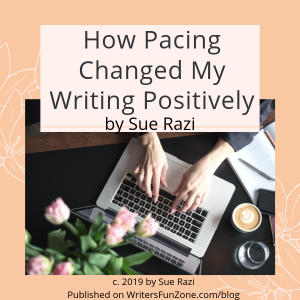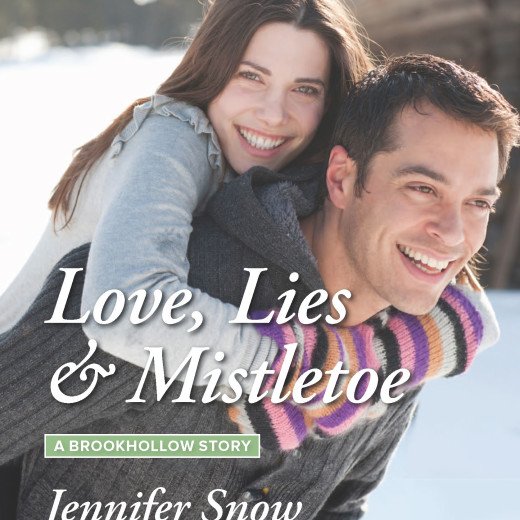How Pacing Changed My Writing Positively by Sue Razi
 Please welcome guest author Sue Razi as she shares with us “How Pacing Changed My Writing Positively.” Enjoy!
Please welcome guest author Sue Razi as she shares with us “How Pacing Changed My Writing Positively.” Enjoy!
***
When I first received the list of courses from my favorite writing group, I read through it looking for that perfect class. I skimmed over the list, stopping at a class about pacing. I knew everything about pacing and quickly dismissed it. But then something gnawed at me.
I liked the teacher and I found something new in every class I took with her. Besides, there weren’t any other classes I was interested in and I liked being in the monthly learning mode.
So, I signed up for the class and the first day came.
You can imagine my surprise when I discovered that there was so much more to pacing than where I placed commas or semicolons.
When I wrote, I never thought about short chapters versus long chapters. I just wrote. Pacing to me was how quickly I got through a story. That was good—right?
I never understood that being rushed through a novel wasn’t necessarily an indication of a well written story—but perhaps more a story told from a shallow point of view where the protagonist was more of a narrator than someone who lets their readers get inside their head.
The reader wants to live what was happening—not read about what was happening.
When I was given manuscript pages from my critique partners I was asked about pacing. If I was not taken out of the story by poor grammar or strange words that startled me and caused me to stop, then the pacing was good.
I never thought about the fact that I had just read five chapters where the tension was ratcheted up without a chapter that allowed the reader to take a sigh of relief and slow it down.
Give the reader a chance to catch their breath.
This class opened my eyes to the world of pacing and how it can enhance your writing and hook your readers. The following are the main points I took from this class.
Pacing Tip #1: Dialogue vs Narration
Before taking this class, I never thought how dialogue could be used to speed up a chapter that was dragging, and how more narrative could be used to slow down a chapter that was speeding by too fast.
I just wrote however the words came out.
I often used dialogue and narration as an information dump. Then I was surprised when editors, classmates, and critique partners pointed this out.
Not only did including long paragraphs of dialogue slow the story down, this type of writing showed I was a novice writer.
When narration is properly placed, it moves the story forward and gives the reader a break from more intense, dramatic scenes.
Pacing Tip #2: Tension
You can’t have an engaging story without tension.
What I’m referring to here is the tension the reader experiences as they read your story and letting the reader “feel” the story through your characters eyes.
Another issue about pacing and tension that I never really focused on was structuring a chapter that starts out with low tension and then builds to a high point and the chapter ends.
The tension can be physical — a character is put in physical danger.
Will the character survive?
Then there is emotional tension where the character is facing an emotional decision or risk.
The hero has just proposed. Will the heroine say yes?
Mental tension stems from the desire to gather a clue that could help solve the mystery.
When the chapter is ended at one of these high stake points, the reader will turn the page and continue reading to find out what happens.
How a scene or a chapter is constructed, how much emphasis we put on the types of scenes or what our readers experience, will determine the amount of rise and fall of tension. This dictates how fast or slow our story will unfold.
Pacing Tip #3: Timing when characters are introduced into the story
I just finished a book by a leading New York Times Best Seller Romantic Suspense writer. She spent the first 75 pages describing how her husband had left her in dire straits. The hero wasn’t introduced until page 80. The suspense didn’t come until pages later. I found the pacing so slow that I skimmed until he was introduced. Would I call that good pacing? No.
If I wasn’t reading this story to see how she handled the romance, I would have put the book down.
A lesson I got from this book: Know your genre and make sure that the pacing of the story gives the reader what they expect, when they expect it.
Pacing Tip #4: Sentence length
We all recognize the importance of chapter and scene breaks and their relationship to pacing. However, how often do we think of pacing when it comes to composing our sentences?
Some of this we do automatically.
Shorter sentences are a way of increasing drama and tension. They move the scene at a faster clip.
Add in longer sentences and the story slows down.
Dialogue usually gets to a point and moves the story faster. Sentences are short. Keeping dialogue to two to three sentences before inserting dialogue or physical tags helps to keep the pace moving forward.
Narrative is used to include details and convey a deeper point of view about the character. But it needs to be placed at the correct points in the story that relate to the narrative or backstory.
With good pacing
With good pacing, the reader is fed the narrative and backstory a little at a time—enough to make them want to reader further.
The overriding point that I left this with after the class “Understanding Pacing with Laurie Sanders” was that fact that no matter how we approached the issue of pacing, it should always keep moving the story forward. When pacing is handled correctly, the reader is left with a satisfying story that they will remember long after they have finished it.
***
ABOUT THE AUTHOR
 Sue Razi hails from a suburb of Detroit, Michigan where she lives with her husband, Hossein, a son, Sam, and an inquisitive rescue Tabby cat named Lacie. She took early retirement from a career as a technical writer, training instructor, and technical writing teacher for a major telecommunication company. She received a B.A in English and Psychology from EMU and recently returned from two years in Curacao, an island off the coast of Venezuela.
Sue Razi hails from a suburb of Detroit, Michigan where she lives with her husband, Hossein, a son, Sam, and an inquisitive rescue Tabby cat named Lacie. She took early retirement from a career as a technical writer, training instructor, and technical writing teacher for a major telecommunication company. She received a B.A in English and Psychology from EMU and recently returned from two years in Curacao, an island off the coast of Venezuela.
She finished her first book, Hush Little Baby, which won Judges Favorite in the National Ink and Insights writing competition. She is currently working on her second novel, Please Don’t Forget Me about a couple on their honeymoon cruise that end up on Curacao trying to solve the murder of a friend. You can connect with Sue Razi on Twitter at https://twitter.com/Mikalslady.
***
Did you learn something new, awesome, mind-blowing, or useful in a writing class you took? Then we at Writer’s Fun Zone would love to hear about it. Be it about writing or marketing, editing or publishing, your article on the 3-4 main takeaways is welcome. Check out our writers guidelines and query today: https://writersfunzone.com/blog/guest-columnists-welcome/.






